- Home
- Clive Cussler
The Sea Hunters II: More True Adventures with Famous Shipwrecks Page 13
The Sea Hunters II: More True Adventures with Famous Shipwrecks Read online
Page 13
Upon returning to the main deck, Dewey approached Smith and hastily explained his temporary absence. He motioned to the two empty lifeboats alongside, indicating that they would not be there save for his initiative and fortitude.
“We must make sure none is left aboard alive,” Smith said evenly.
What began as a compelling search soon turned into a grim nightmare. Dewey quickly selected five men to accompany him throughout the disabled warship. Bodies had to be closely examined in the dark and smoke to see if any of the men were still alive. They were very careful to make certain no spark of life remained, or the poor man might lie there, powerless to move, as the flames crept closer and closer.
They moved belowdecks, shouting that there was little time left to abandon the ship. Luckily, they found a young cabin boy who was still breathing despite being buried under a pile of dead bodies that had been cut down by bursting shells. Satisfied that only the dead remained on board, Dewey was then ordered by Smith to make absolutely certain that old Mississippi would be totally destroyed before falling into Confederate hands.
Dewey ran to his stateroom, snatched off the mattress from his berth, and dragged it to the wardroom, where he sliced it open with a dress sword, piled chairs and tables on top of it, and then threw an old oil lantern into the debris, igniting a roaring fire almost immediately. Only then did he and the few men left on board join Captain Smith in the last lifeboat.
They pushed off from the hull aft of the paddle wheels and immediately were caught in the powerful current and swept downriver. As they looked back, a giant torrent of flame burst through the skylight of the wardroom that Dewey had set ablaze. The Confederate guns fired away at the lifeboat but fortunately failed to score a hit. At the sight of the flaming ship, the entire bluff above the river broke into a rebel yell. The victory was theirs.
Farragut’s fleet had come within an inch of total disaster.
Smith seated himself in the stern of the lifeboat, still puffing nonchalantly on a cigar while Dewey manned the tiller, and the men rowed through the splashing shells until they reached the safety of the battle-scarred Richmond, anchored downriver out of reach of the Confederate guns. During their flight, Smith took off his sword and revolvers and threw them into the river.
“Why did you do that?” Dewey asked him.
“I’m not surrendering them to any rebel,” he said haughtily. It was a hasty decision Smith would come to regret.
A humorous episode occurred when the men of Mississippi boarded Richmond. While Dewey was setting the fire in the wardroom on board the doomed ship, Ensign Dean Batcheller snatched up a dress uniform coat hanging in the cabin he shared with Ensign Francis Shepard. The rest of the crew, including Smith and Dewey, escaped with only the clothes on their backs.
Proudly, Batcheller held up the coat. “At least I’ll have something to wear for the ladies in New Orleans.”
His cabin mate Ensign Shepard leaned over and eyed the coat. Then he looked up and grinned. “Thanks very much, Batcheller, but that’s my coat.”
And so it was.
Dewey was greeted by a close friend from his Naval Academy days at Annapolis, Winfield Scott Schley, who was destined to command the fleet that would destroy the Spanish fleet off Santiago, Cuba, at almost the same time Dewey was making his mark in the Philippines.
Back at the battered Mississippi, the river flowed in through the engine water-delivery pipes that had been cut by the engine-room crew before they abandoned ship. Because the hull was grounded on an angle with the bow slightly raised, the incoming water flowed toward the stern. The added weight lifted the bow, and she slid free off the shoal. The current turned her around so that now she was moving with her bow pointed downstream. The port guns that had been loaded but not fired now faced the Confederates. As the flames reached their primers, they began firing a ragged broadside in a final act of defiance. Dewey solemnly described the sight as “a ship manned by dead men still firing at the enemy.”
Engulfed by a sheet of fire that raged through the pummeled ship, Mississippi was carried downriver by a four-knot current. The shriek of steam escaping from the ship’s safety valve cut through the pandemonium of gunfire. Flames burst from her rigging and erupted into the night sky, casting a flickering orange blaze of light that illuminated both shorelines as bright as day. Looking like a floating, flaming pyramid, Mississippi was a funeral pyre for the dead aboard. It was a sight never forgotten by both the Federals and rebels who watched her fiery passage in the night. Her death would later be described as a grand spectacle.
Several reports from both sides in the battle put the frigate sliding off the shoals at 3 A.M. and drifting down around Profit Island, her flaming hull reflecting in the sky until 5:30, when the fire reached the twenty tons of gunpowder in her magazine and she blew up in a tremendous explosion. The ensuing concussion shook the country for miles around and rocked the Union ships from stem to stern. Such was the end of the brave old paddle steamer.
It was somehow fitting that the river she was named for became her burial shroud.
Perhaps Dewey himself paid Mississippi her greatest tribute when he stood on the deck of Richmond, stony-faced and deeply saddened as he watched her die. He said, “She goes out magnificently.”
II
Nothing Stays the Same 1989
This is especially true of rivers and their shorelines. Unless it’s the Colorado flowing through the Grand Canyon on the same course for thousands of years, most rivers, particularly the Mississippi, change their course on a daily basis. The riverboat Sultana, chronicled in the first Sea Hunters book, burned and sank a few miles above Memphis in 1865 with a loss of two thousand lives. Our mag search put the remains two miles from the present course of the river, eighteen feet deep in a farmer’s soybean field in Arkansas.
The final resting place of the gallant old frigate Mississippi, where she has lain ignored and forgotten since that horrendous night in 1863, is not under the present river channel, either. In the approximate area where Mississippi was last seen, the river has moved almost a mile to the west and has become an immense bog.
Because I did not feel it was fitting or proper that “lost in obscurity” be Mississippi’s epitaph, I cleared my desk after finishing another Dirk Pitt adventure book and began the research in preparation for the hunt for Mississippi.
Relying on researcher Bob Fleming in Washington, who combed the archives, we amassed a mountain of material that we eventually sifted to a ten-inch pile. Then began the investigation to estimate a ballpark for Mississippi’s location. One of the first things we had to consider was the possibility that she had been salvaged. Fortunately, a probe through the naval archives revealed no such attempt. Part of the reason was a report that she had exploded in the middle of the channel and sunk in deep water, which would have been between eighty and a hundred feet, a depth that would have made it impractical to undertake a salvage operation 140 years ago.
Since none of the contemporary reports gave a clue to the exact location where she had blasted herself to bits and gone down, and no distances were given to still-existing landmarks, I had to base the search on the time element. With the river running at a known four knots, it didn’t take a great strain of my pitifully inadequate talent for mathematics to figure that Mississippi drifted a distance of ten to eleven miles before she sank.
There were one or two Confederate reports that put the site of her explosion close to the wrecks of the ironclad Arkansas, destroyed by her crew a few months earlier. But we had discovered the ironclad eight years before under a levee sixteen miles below Port Hudson at the bend of the reach before it dropped toward Baton Rouge.
The ten-mile distance was consistent with contemporary references. Spears’s biography of Farragut states that “she reached the foot of Profit Island when the fire reached her magazine and she blew up.”
A. J. C. Kerr, a Confederate veteran from Corsicana, Texas, stated later in his memoirs that “the Mississippi blew up ten
miles below Port Hudson.”
The log of the Richmond also stated that “the Mississippi drifted down the river and blew up ten miles astern of us.”
George S. Waterman recounted that “the Mississippi floated down the river a short distance below the fleet when the fire reached her magazine.”
And finally, there is a sketch of the river and gun emplacements at Port Hudson with a notation by William Waud, a war artist who was on board Richmond. “Air very thick with smoke. The Mississippi drifting down in flames, exploding near the land pier.”
The last was a good reference point, except there were at least six piers along that stretch of river in 1863. Then, to muddy the water, Waud never indicated what he meant by “land pier.” Upper Springfield Landing was the closest to the projected site. Also, two contemporary wrecks were marked on the old chart, one on top of the other, on the west bank below the bend in the river. Over the passing of a century or more, the encroaching swamp had covered them and left their remains a good half mile from the present river flow Since they were unnamed and appeared to have run aground, we eliminated them as Mississippi. Also, it seemed likely that if one had been the Union frigate, the chart maker would have labeled her as such.
Next came the important process of overlaying a new chart showing the present course of the river as compared with an 1868 chart. It quickly became apparent that the approximate spot where we computed Mississippi to lie was now nearly a quarter mile west in a huge bog called Solitude Point.
Springfield Bend, as the area that traveled around the point was called, had filled in toward the east. It was encouraging, but we still felt we stood a slim chance.
Having taken it as far as we could go, we decided it was time to gather up the equipment and head for Louisiana to begin our search.
In May of 1989, Craig Dirgo and I arrived in Baton Rouge and arranged with the West Baton Rouge parish sheriff’s department to once again borrow their great little aluminum boat for a river survey. Accompanied by a deputy and his son-in-law, we launched the boat on a hot, humid day under a clear sky. Relying on NUMA’s EG&G sidescan sonar and the Schonstedt gradiometer to find a promising target, we set out hoping for the best, expecting the worse, and willing to settle for anything in between.
We began surveying the river thirteen miles below Port Hudson and ran north past Profit Island, which has changed very little over the past hundred years, to within six miles of where Mississippi grounded and began her drift. I had been told that the Army Corps of Engineers had surveyed part of the river where Mississippi had grounded and had recorded several large anomalies on the riverbed, but we found it as barren as the Mojave Desert. Nothing remotely resembling a wreck was discovered, and no targets worth investigating. There was one wreck depicted on an old 1880s chart against the east bank, but we found no trace of it. Not surprising, since the records show that it was likely dredged out of existence many years ago.
The southern tropical heat, shaken and stirred with 100 percent humidity, nearly did in Craig. With no wind to cool the sweat surging from our pores, the atmosphere was agonizingly oppressive. Many people think it is cooler on the water when the weather is hot — not necessarily so. You have little shade on a small boat, and the steaming water can easily raise humidity off the scale when there is no hint of rain from a cloudless sky.
The Solitude Point swamp is not only huge, it’s impassable. You couldn’t walk, wade, or swim through it, much less penetrate it with a jet ski. Interestingly, the 1836 chart fails to indicate it because it had yet to make its presence known. Oil drilling has since taken place inside the swamp, and pipelines stretch outward like legs on a spider, three of them traveling up the river to the north.
Unable to conduct a mag survey from the surface, I turned to Joe Phillips of World Geoscience, Inc., in Houston, Texas, and arranged for a helicopter geophysical aeromagnetic survey. Using a Bell 206 Ranger equipped with a SCINTREX vapor magnetometer sensor, a Picodaas digital acquisition system, and a GPS navigational system, they launched the survey in August of 1999.
Flying tight ninety-foot lines at an altitude of less than a hundred feet, they found the oil field west of the point without any trouble. Paying special attention to the 1864 course of the river, they easily picked up the magnetic anomalies from the two riverboats aground below the point. Then, almost precisely at the ten-mile drift projection of Mississippi, a large anomaly appeared on the magnetometer recording. It was almost directly in the middle of the old river passage. The target was three quarters of a mile inside the swamp from the river’s west bank. They also determined that it was very close to the long-gone Springfield Landing pier mentioned by the Civil War artist Waud. Another encouraging indication was the computerized profile of Mississippi, showing a large iron mass that would have included guns, shot, anchors, and many tons of ship’s hardware.
Was it Mississippi? Until we could actually touch a piece of it, there would be no uncorking the champagne.
That was about as far as we could go in our search. We reeled in the sensors, packed the equipment, and headed for a Cajun restaurant. We had done our best and would leave it to future archaeologists, historians, and shipwreck hunters to probe the depths of that loathsome swamp.
Mississippi would be a fascinating wreck to excavate since she hadn’t been salvaged, and even despite the damage from the explosion, she had to be relatively intact. Unfortunately, any excavation more than eighty feet deep in the middle of a bog would be extremely difficult, if not impossible.
It seems that Mississippi will remain under Point Solitude for a long time to come, perhaps for eternity. You never know if it’s best that way.
PART FIVE
The Siege of Charleston: Keokuk, Weehawken, and Patapsco
I
Cradle of Secession 1863–1865
Rear Admiral Samuel F. DuPont stared into the distance. The bow of his command, New Ironsides, a heavily armed frigate, was pointed in the direction of Charleston. To starboard lay Sullivan’s Island, to port Morris Island and Cummings Point.
Dead ahead was DuPont’s objective, Fort Sumter.
Fort Sumter, a massive brick-and-concrete fortress rising forty feet above the water, was located on a small island off Charleston. Sumter was one of the first Federal installations to be taken by the Confederates. It was also the most visible reminder to the citizens of the United States of the South’s defiance. The first shots of the War Between the States had been fired on Sumter.
DuPont swiveled his head and glanced at his assembled fleet.
From west to east they stretched across the water. Keokuk, Nahant, Nantucket, Catskill, his own New lronsides, then Patapsco, Montauk, Passaic, and Weehawken. The flotilla was an impressive armada tasked with a difficult mission.
The Union ships were clad in armor — a recent development for the antiquated Union navy — and the fleet was powered by steam, not sail. Still, for all their new technology, their task was as old as sea warfare itself: to bring a concentrated fire of heavy guns to bear, to project force on a distant target.
To achieve this goal, DuPont led the most powerful squadron ever assembled.
Commander A. C. Rhind stared through the forward porthole of his command, Keokuk. His ship was farthest to the west and last in the long line of warships. Keokuk was an experimental craft commissioned to the Union navy on February 24, 1863.
Her design was different from that of the seven other Passaic-class ironclads. Unlike the razor-edged styling of the monitors, Keokuk featured a rounded, whale-like upper deck. A pair of armored, half-conical towers perched on each end of the vessel, separated by a stubby smokestack. Amidships, alongside the slightly taller smokestack, was a davited wooden shore boat. On the stern deck was a wooden staff, where the Stars and Stripes fluttered in the breeze.
The ship looked like a cigar topped by thimbles.
Keokuk was 159 feet 6 inches in length, with a beam of 36 feet and a draft of 8 feet 6 inches. She was propelled by twin screws powe
red by steam, which gave her greater speed and maneuverability over the monitors. Her armament consisted of a pair of massive 11-inch Dahlgren guns. The guns were designed to pivot to fire through a trio of gun ports. Unlike the monitors, the towers did not rotate to give her a greater field of fire. Her armor was too light for the guns of Sumter, but Rhind did not know this yet. Keokuk carried a crew of ninety-two.
Ship engineer N. W. Wheeler approached Rhind. “All is in order,” he reported quietly.
“Follow them in,” Rhind said to the pilot.
* * *
“We’re almost in range,” Captain John Rodgers shouted. “We’ll be hearing from the rebels soon.”
Rodgers commanded Weehawken, the lead vessel in the line approaching Fort Sumter. While Rodgers was proud of his vessel and crew, he couldn’t help but feel anxious. At that moment, he saw a puff of smoke from Sumter, and a shot struck the water twenty feet ahead. The battle was starting.
Weehawken was some 200 feet in length, with a beam of 46 feet. The vessel featured twin gun turrets that packed a wallop. One gun was a standard 11-inch smoothbore; the second, a 42,000-pound, 15-inch Dahlgren, could hurl a 400-pound shell a mile. On her bow she pushed a torpedo raft to detonate the Confederate mines.
* * *
From inside the pentagonal-shaped Fort Sumter, the approaching line of warships looked like a corridor of floating death. The commanding officer of Fort Sumter, Major Stephen Elliott Jr., had faith in his ability to ward off the attack. Still, the sight was enough to give pause. Built on an artificial island three and three-eighths miles distant from Charleston, Sumter was a fortress. The fort’s base was constructed of chunks of stone from northern quarries. Her walls were solid brick, and concrete masonry stretched sixty feet high. At their thickest point, the walls were twelve feet in width; at the narrowest, a full eight. Guns were arranged on casemates on a pair of decks; the upper deck was open, and the lower deck guns were firing through reinforced ports.

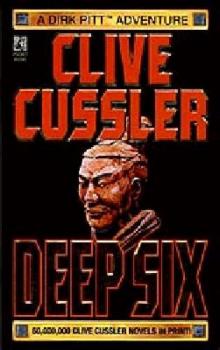 Deep Six
Deep Six Odessa Sea
Odessa Sea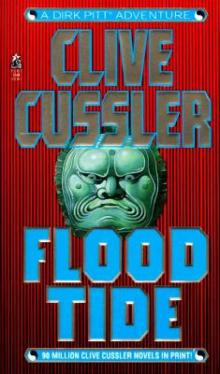 Flood Tide
Flood Tide Valhalla Rising
Valhalla Rising Thriller 2
Thriller 2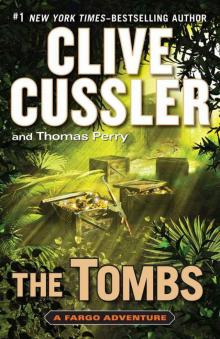 The Tombs
The Tombs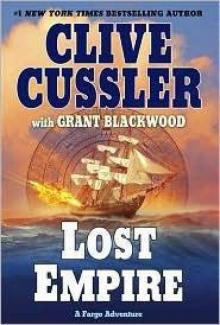 Lost Empire
Lost Empire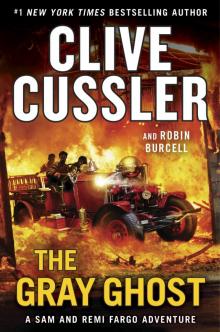 The Gray Ghost
The Gray Ghost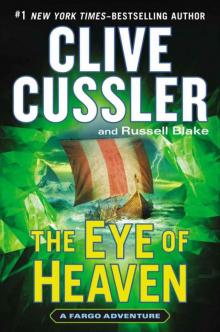 The Eye of Heaven
The Eye of Heaven Polar Shift
Polar Shift The Kingdom
The Kingdom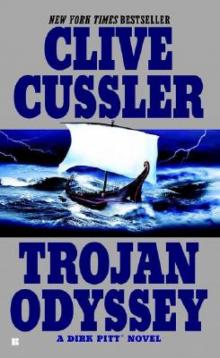 Trojan Odyssey
Trojan Odyssey Shadow Tyrants
Shadow Tyrants Nighthawk
Nighthawk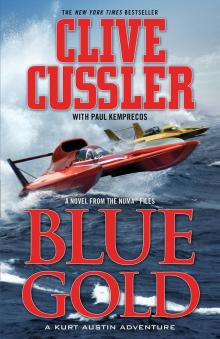 Blue Gold
Blue Gold Serpent
Serpent Lost City
Lost City The Gangster
The Gangster White Death
White Death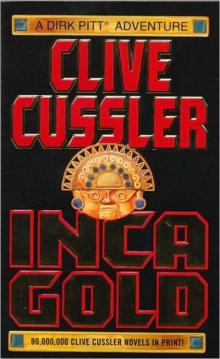 Inca Gold
Inca Gold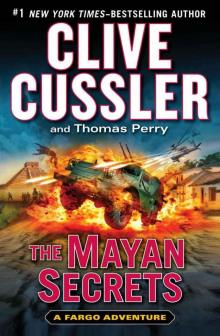 The Mayan Secrets
The Mayan Secrets The Pharaoh's Secret
The Pharaoh's Secret The Emperor's Revenge
The Emperor's Revenge Corsair
Corsair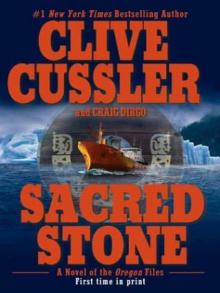 Sacred Stone
Sacred Stone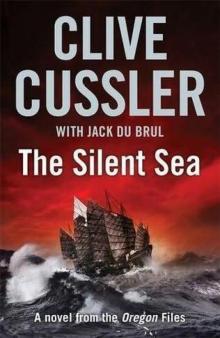 The Silent Sea
The Silent Sea The Rising Sea
The Rising Sea Black Wind
Black Wind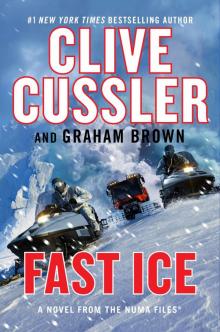 Fast Ice
Fast Ice Ghost Ship
Ghost Ship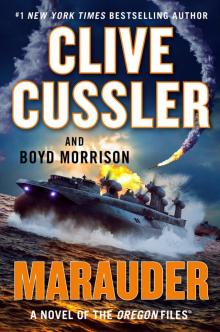 Marauder
Marauder The Thief
The Thief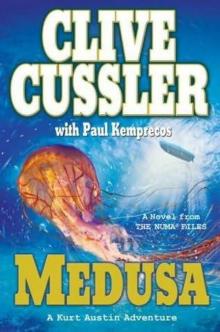 Medusa
Medusa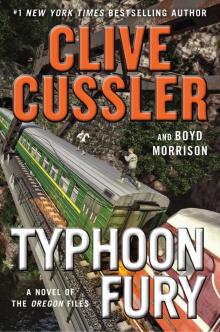 Typhoon Fury
Typhoon Fury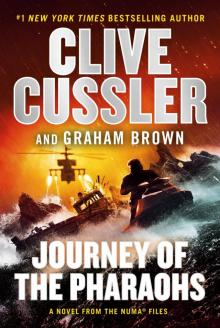 Journey of the Pharaohs
Journey of the Pharaohs The Navigator
The Navigator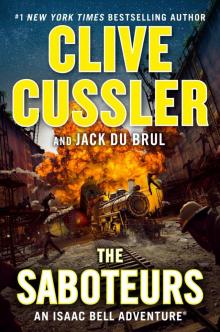 The Saboteurs
The Saboteurs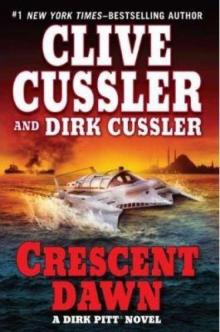 Crescent Dawn
Crescent Dawn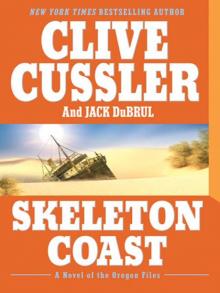 Skeleton Coast
Skeleton Coast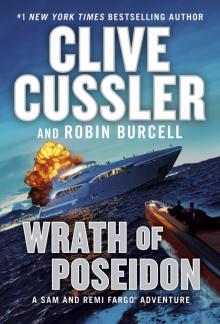 Wrath of Poseidon
Wrath of Poseidon The Mediterranean Caper
The Mediterranean Caper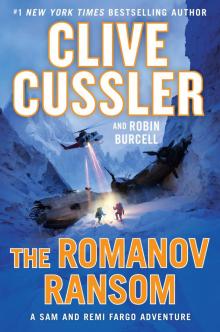 The Romanov Ransom
The Romanov Ransom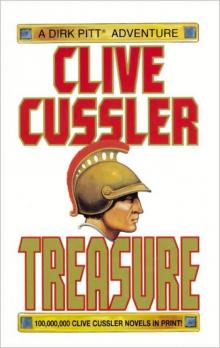 Treasure
Treasure The Race
The Race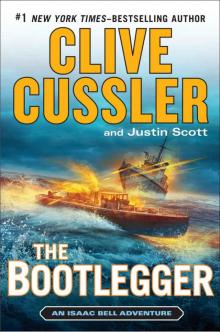 The Bootlegger
The Bootlegger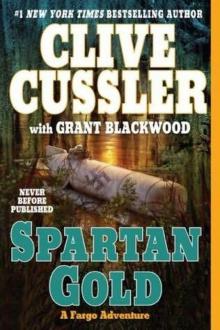 Spartan Gold
Spartan Gold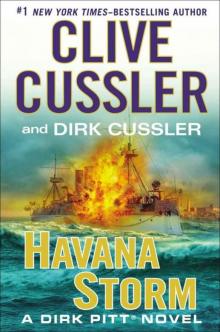 Havana Storm
Havana Storm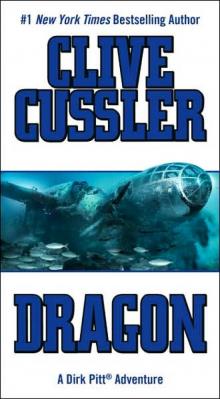 Dragon
Dragon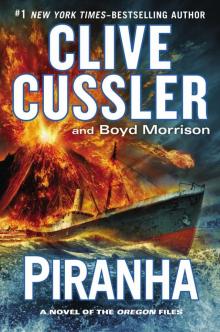 Piranha
Piranha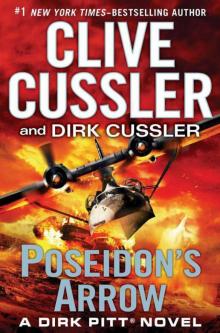 Poseidon's Arrow
Poseidon's Arrow The Cutthroat
The Cutthroat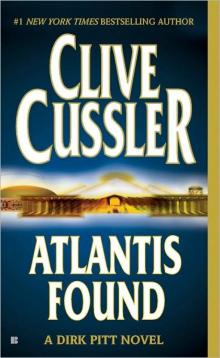 Atlantis Found
Atlantis Found The Jungle
The Jungle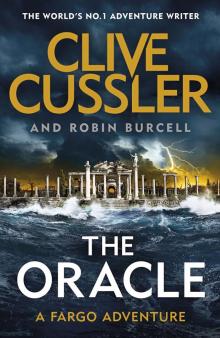 The Oracle
The Oracle Treasure / Dragon / Sahara: Clive Cussler Gift Set
Treasure / Dragon / Sahara: Clive Cussler Gift Set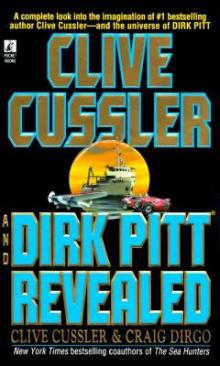 Clive Cussler and Dirk Pitt Revealed
Clive Cussler and Dirk Pitt Revealed The Sea Hunters
The Sea Hunters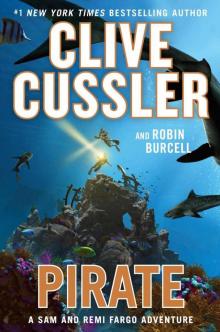 Pirate
Pirate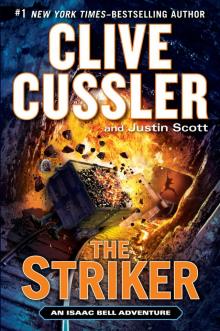 The Striker
The Striker Plague Ship
Plague Ship The Wrecker
The Wrecker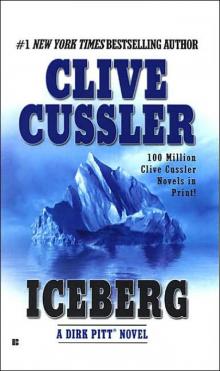 Iceberg
Iceberg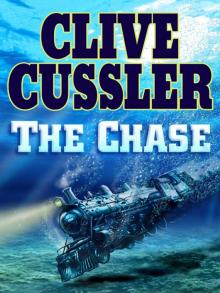 The Chase
The Chase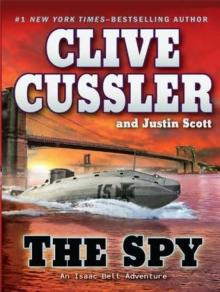 The Spy
The Spy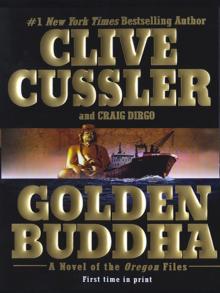 Golden Buddha
Golden Buddha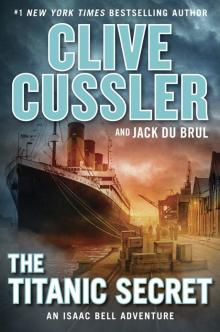 The Titanic Secret
The Titanic Secret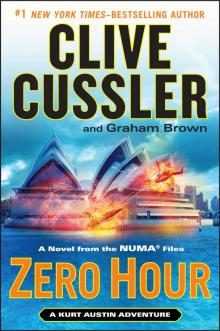 Zero Hour
Zero Hour Fire Ice
Fire Ice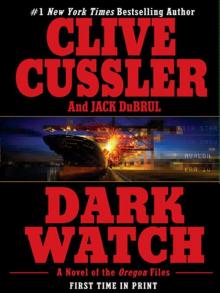 Dark Watch
Dark Watch The Storm
The Storm The Assassin
The Assassin Vixen 03
Vixen 03 Arctic Drift
Arctic Drift Night Probe!
Night Probe! Cyclops
Cyclops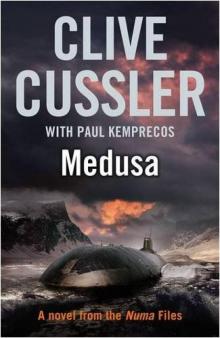 Medusa nf-8
Medusa nf-8 Shock Wave dp-13
Shock Wave dp-13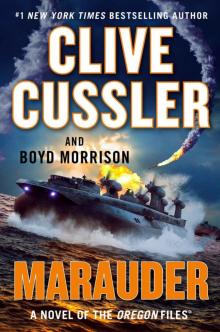 Marauder (The Oregon Files)
Marauder (The Oregon Files)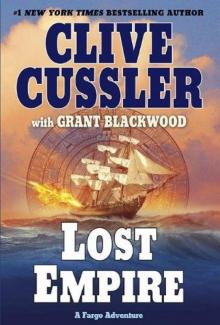 Lost Empire fa-2
Lost Empire fa-2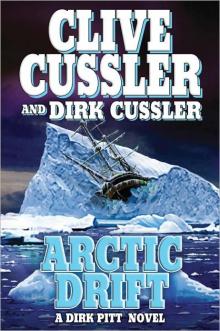 Arctic Drift dp-20
Arctic Drift dp-20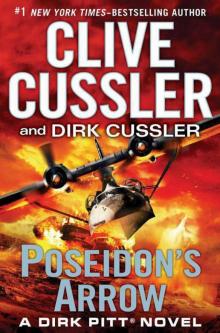 Dirk Pitt 22 - Poseidon's Arrow
Dirk Pitt 22 - Poseidon's Arrow Treasure of Khan dp-19
Treasure of Khan dp-19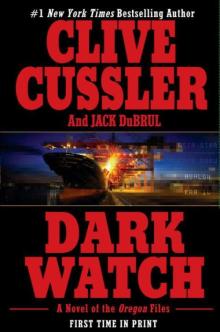 Dark Watch of-3
Dark Watch of-3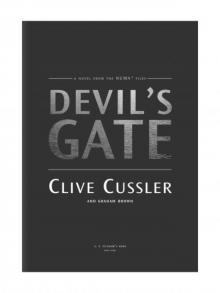 Devil's Gate
Devil's Gate The Sea Hunters II: More True Adventures with Famous Shipwrecks
The Sea Hunters II: More True Adventures with Famous Shipwrecks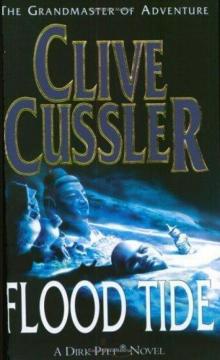 Flood Tide dp-14
Flood Tide dp-14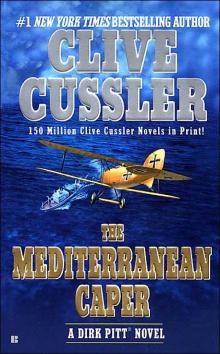 The Mediterranean Caper dp-2
The Mediterranean Caper dp-2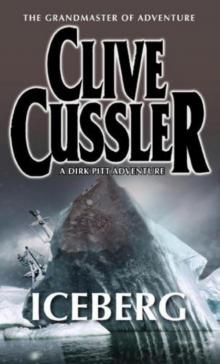 Iceberg dp-3
Iceberg dp-3 Sahara dpa-11
Sahara dpa-11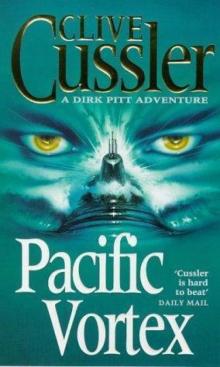 Pacific Vortex! dp-1
Pacific Vortex! dp-1 Deep Six dp-7
Deep Six dp-7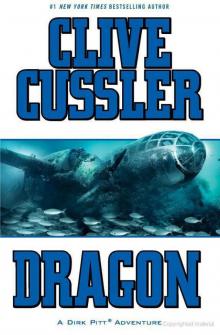 Dragon dp-10
Dragon dp-10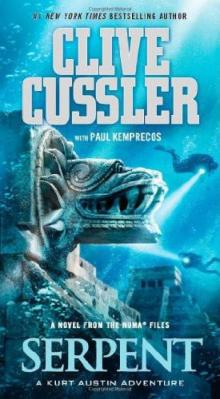 Serpent nf-1
Serpent nf-1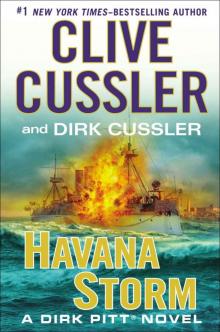 Havana Storm (Dirk Pitt Adventure)
Havana Storm (Dirk Pitt Adventure)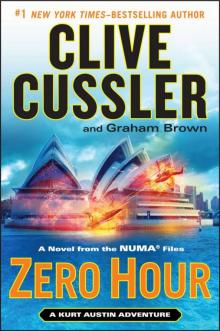 Zero Hour nf-11
Zero Hour nf-11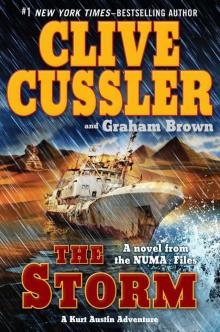 The Storm nf-10
The Storm nf-10 The Thief ib-5
The Thief ib-5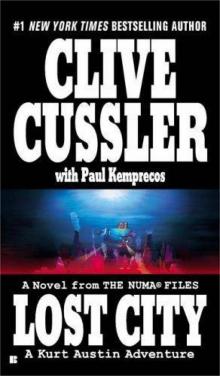 Lost City nf-5
Lost City nf-5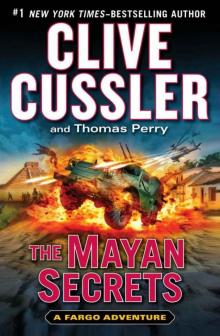 The Mayan Secrets fa-5
The Mayan Secrets fa-5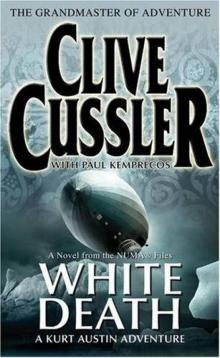 White Death nf-4
White Death nf-4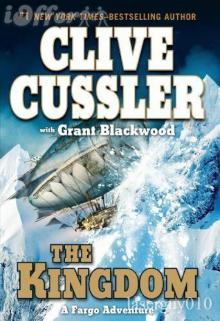 The Kingdom fa-3
The Kingdom fa-3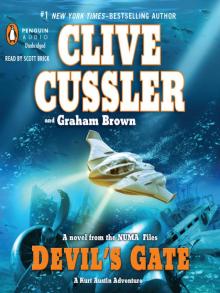 Devil's Gate nf-9
Devil's Gate nf-9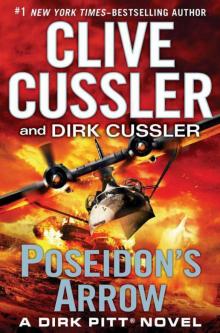 Poseidon's Arrow dp-22
Poseidon's Arrow dp-22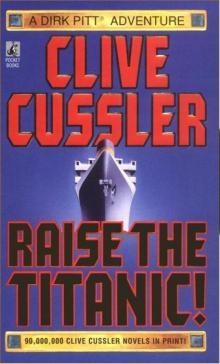 Raise the Titanic dp-4
Raise the Titanic dp-4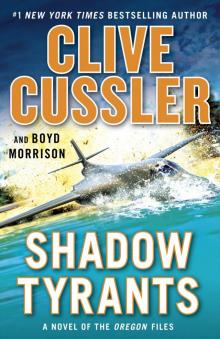 Shadow Tyrants--Clive Cussler
Shadow Tyrants--Clive Cussler Sacred Stone of-2
Sacred Stone of-2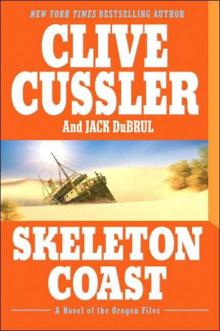 Skeleton Coast tof-4
Skeleton Coast tof-4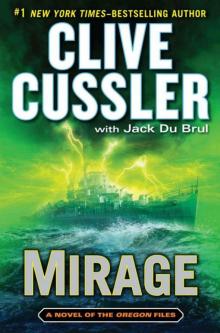 Mirage tof-9
Mirage tof-9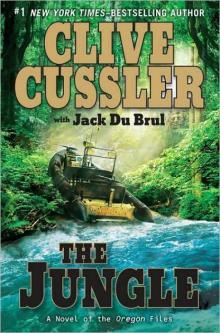 The Jungle of-8
The Jungle of-8 The Emperor's Revenge (The Oregon Files)
The Emperor's Revenge (The Oregon Files)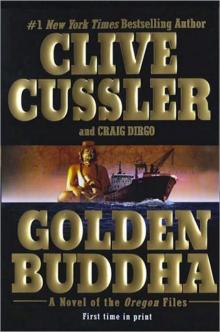 Golden Buddha of-1
Golden Buddha of-1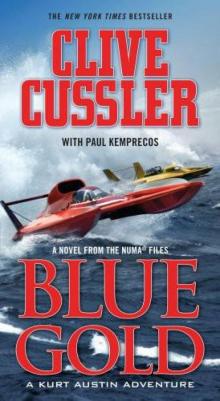 Blue & Gold
Blue & Gold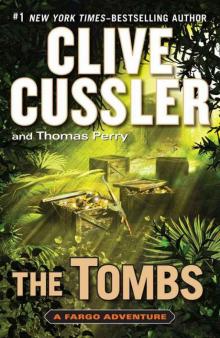 The Tombs fa-4
The Tombs fa-4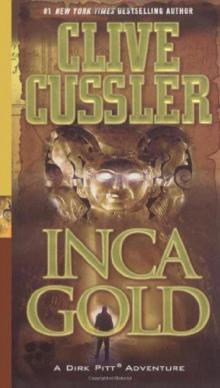 Inca Gold dp-12
Inca Gold dp-12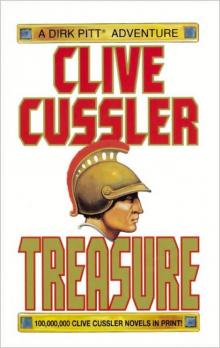 Treasure dp-9
Treasure dp-9 Atlantis Found dp-15
Atlantis Found dp-15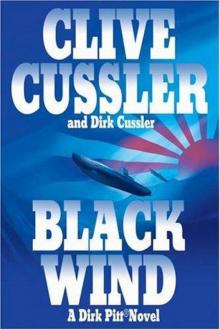 Black Wind dp-18
Black Wind dp-18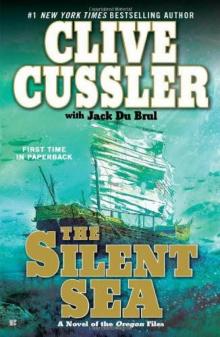 the Silent Sea (2010) tof-7
the Silent Sea (2010) tof-7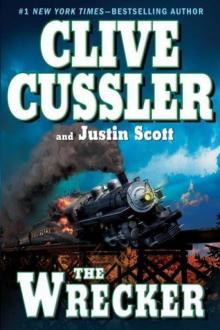 The Wrecker ib-2
The Wrecker ib-2 Fire Ice nf-3
Fire Ice nf-3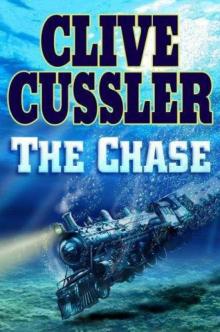 The Chase ib-1
The Chase ib-1 Sahara
Sahara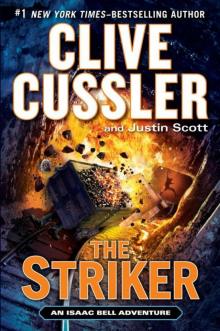 The Striker ib-6
The Striker ib-6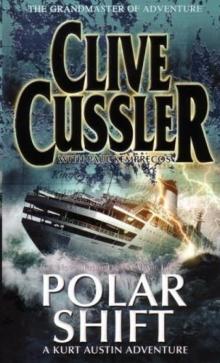 Polar Shift nf-6
Polar Shift nf-6 The Race ib-4
The Race ib-4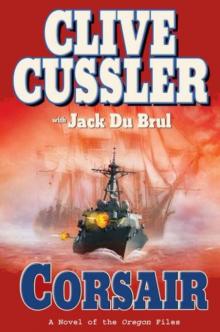 Corsair of-6
Corsair of-6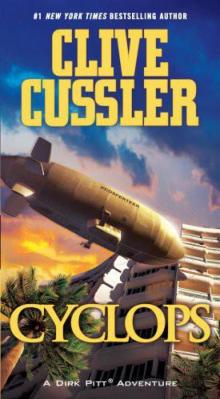 Cyclops dp-8
Cyclops dp-8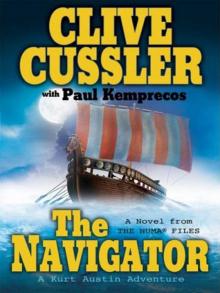 The Navigator nf-7
The Navigator nf-7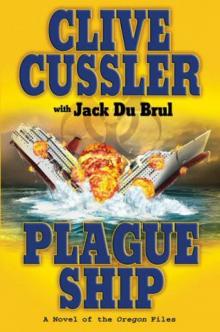 Plague Ship tof-5
Plague Ship tof-5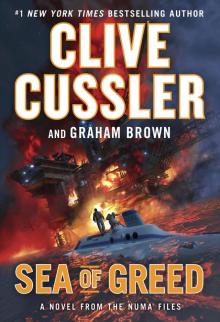 Sea of Greed
Sea of Greed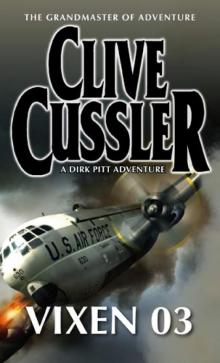 Vixen 03 dp-5
Vixen 03 dp-5 Thriller 2: Stories You Just Can't Put Down
Thriller 2: Stories You Just Can't Put Down